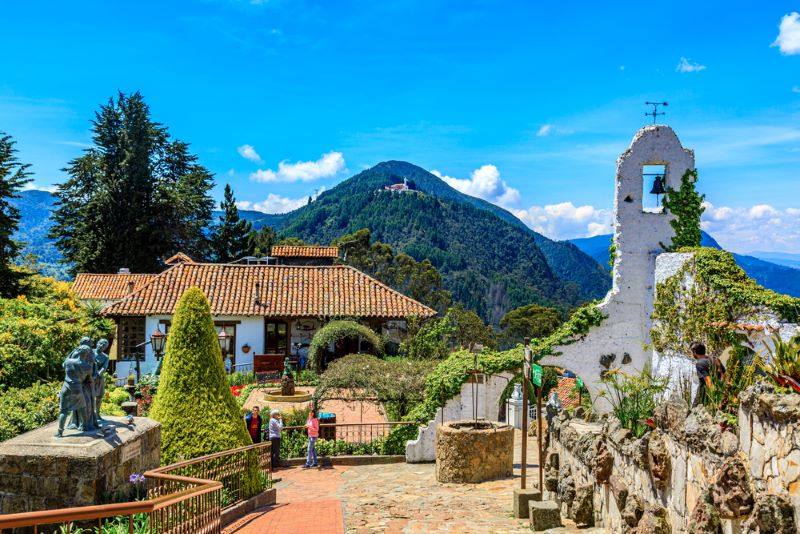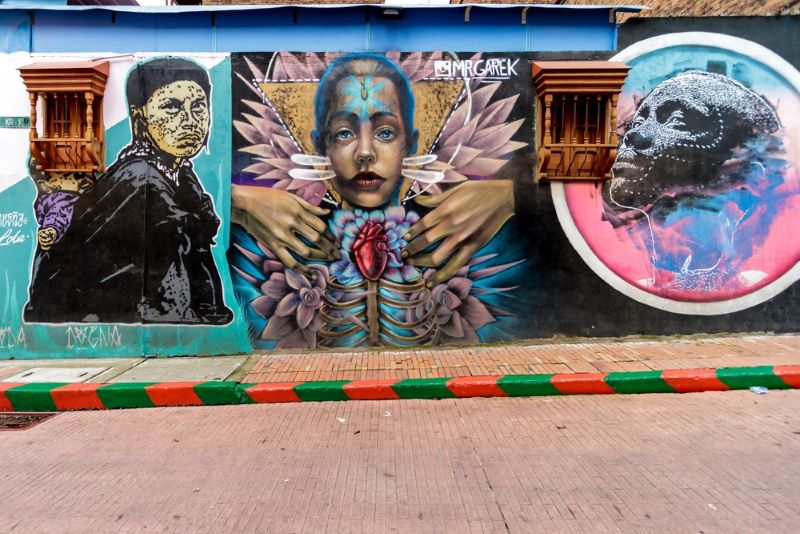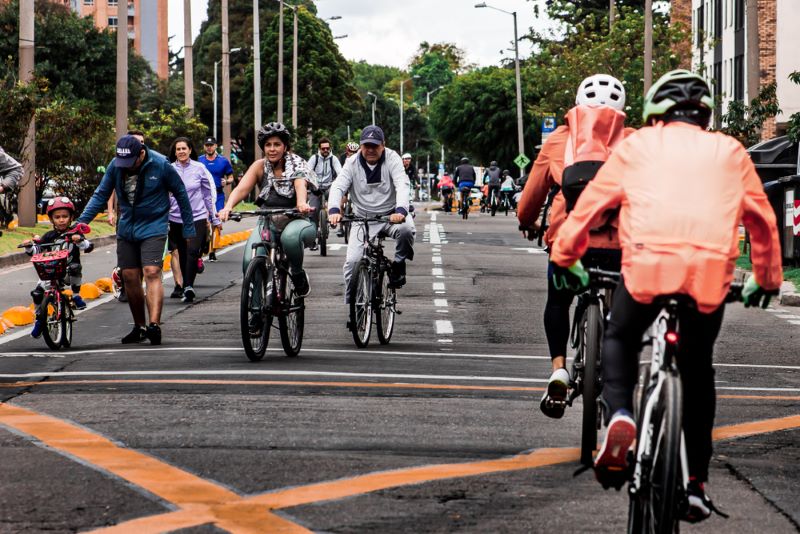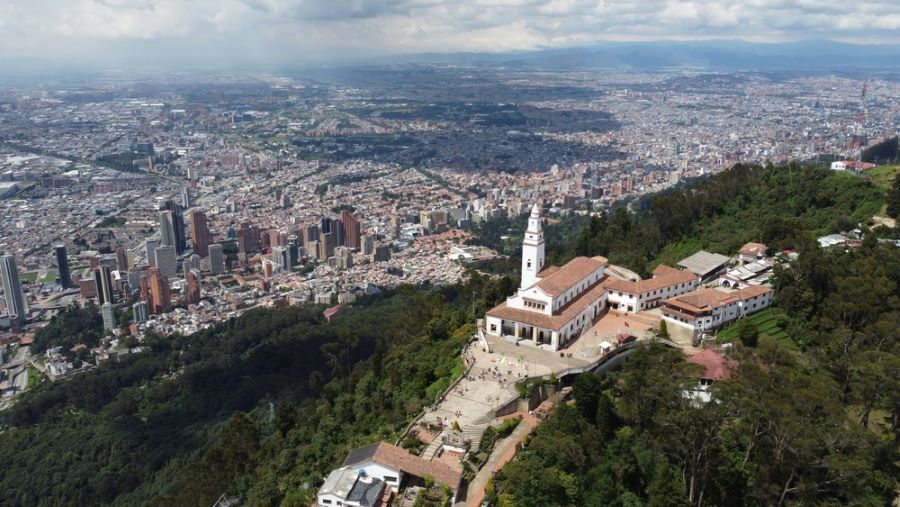Discovering Bogota with Check MIG
Colombia is a country of wild nature, rich culture, and friendly people. Its dramatic landscapes range from the dense Amazonian jungles to the snow-capped peaks of the Andes, and from the serene Caribbean coastline to the verdant coffee plantations of the Zona Cafetera. Each region offers its unique adventures, whether it’s exploring the biodiversity of the Amazon, trekking to the ancient Ciudad Perdida, or simply relaxing on the pristine beaches of Tayrona National Park.
During the last decade, Colombia has become one of the top Latin American destinations with millions of tourists visiting each year. This is why, the Colombian government has introduced Check MIG Colombia – a mandatory travel permit meant to ease the flow of tourists to the country by preloading foreign visitors’ data. The approved Check MIG is a way to ensure security and at the same time to make entry to the country quicker. If planning to travel to Colombia, before boarding your flight, do not forget to complete the Chech MIG application and obtain your QR Code.
Bogota
Colombia’s capital Bogota is a true cultural hub with museums, dynamic art scenes, and busy nightlife. A cultural tapestry of indigenous heritage, colonial history, and influence of all people who, during the centuries, have made Bogota their home. It is home to more than 8m people. And yet, there are places where the megapolis it feels like a small, picturesque town in the mountain.
La Candelaria neighborhood is the city’s historic center. This is where back in 1538 Bogota was born. It hosts 11 churches and the cathedral Primada Cathedral of Bogotá and the Capilla del Sagrario. It is also where 11 of Bogota’s universities are. A vibrant atmosphere among colonial-era buildings, cobblestone streets, high-end restaurants, museums like the stunning and the most intriguing of all the Gold Museum with its impressive collection of pre-Columbian artifacts, and the many theaters among which La Candelaria and García Márquez. la Candelaria has always been among the favorite tourists’ spots.
The Sanctuary of Monserrate – located on a hill in Bogota, the snow-like church stands at 1000 meters above the city. It has a special place in the hearts of the locals who take the walking paths to the church as a form of pilgrimage. There are three other ways to get to the sanctuary – by car, by funicular, and by cable car. Monserrate eyes on all Bogota . Apart from the beautiful view, you can see there Christian artifacts from the colonial era of Colombia kept in the church and in the monastery.

José Celestino Mutis Botanical Garden – this is the biggest botanical garden in Colombia with a research center and visiting area. This place is home not only to local species but to species from all of South America’s ecosystems. Established in 1955, the gardens have more than 20,000 plants from around 2,400 species.
Paloquemao Marketplace – this is where you can see all of Colombia in one place. Fruits, vegetables, fish, meat, dairy products but also flowers, herbs, and crafts are offered on 900 stalls. Established in 1946, the Paloquemao is a real treat for the senses.
Mercado de las Pulgas de San Alejo is the flea market of Santa Fe (downtown Bogota) open during the weekends. Vinyl, vintage fashion, movie posters, home tools, antiques the Mercado de las Pulgas de San Alejo a bohemian paradise.
Go out and walk
The graffiti of Bogota– the capital is home to valuable street art made by around 8000 artists. Beautiful, bold, empathic, and socially engaged, the street paintings have transformed the city’s atmosphere to reflect local and global influences. Either on a dedicated tour or in private, with a local guide, the graffiti of Bogota is definitely worth seeing.

Free walking tours, bike tours, gourmet tours – they are all organized by local guides and aim to show the zest of life of the people of Bogota by introducing fragments of their everyday life. There are many bike tours around Bogota. The city contains a significant bike lane infrastructure and welcomes people on all kinds of bicycles. You can choose from a rich variety of tours – mountain biking in Bogotá; biking around the graffiti; bike tour in Candelaria; e-biking in Bogota; biking tour around the markets…
Gringo Tuesdays – as the name suggests, this is a meeting, an exchange among the visitors of the capital and their local hosts with the main task – to learn some basic Spanish. Organized by the hostels in Bogota, the gathering turns into a late-night party.
Bogota’s nightlife
With restaurants, cafes, bars, and nightclubs, dance and music, Bogota is known to be the funniest city in Colombia. It is also known to be a queer and LGBT-friendly destination with special parties, clubs, and tourist spots.
Follow our safety advice to get the most out of the Party capital!
General safety tips when going out

Walk in company, never alone.
Do not wear expensive watches, jewelry, or mobile phones.
Do not wave at taxis on the streets.
Do not accept drives from strangers.
Avoid local protests and street riots.
Do not leave your bag or rucksack out of sight.
Do not leave your drink unattended.
Remember, the tourist zones, although generally safe, attract pickpockets.
Run out of cash? Use only indoor ATMs.
Do not forget to obtain your Check MIG for traveling to Colombia three days prior to your flight. Complete the application form on our website and wait for the unique QR Code which will be sent to you by email. As soon as you have it, you are good to go.
El Dorado International Airport
You will most probably land at the El Dorado International Airport. From there, you have several options to get to the city center which is 6 miles (11 km) away.
- The cheapest way to get to the city is to take FEEDER – the free shuttle to the Portal El Dorado station located a couple of miles away. From there you can get to La Candelaria and the city center by taking bus #1 and #K86. The bus trip will take around an hour and will cost around 2USD.
IMPORTANT: The buses do not operate during the night. For more information on the buses’ timetable and routes, please check HERE. Remember to buy a rechargeable Tullave Card before heading to the station. You can do so at the Arrivals Zone of the airport, at designated kiosks.
- Another option is to take a taxi. It will take around 20 minutes and 10 USD to get to the center of Bogota. The taxis can be taken from Terminal 1 (exits 2, 3, 5, 6) and from Terminal 2 (arrivals). Be careful about the taxi you will take. Often non-reglamented taxi drivers line up along with those authorized to take passengers from the airport. In order to be sure you will land at the right taxi company, pre-pay your ride at the Arrival’s taxi counters.
- Should you need an English language speaking driver, you can check for companies like Welcome Pickup. For around 30 USD you will be transferred door-to-door in a secure drive with a chauffeur speaking English.
Transportation
With a subway infrastructure in the early stage of planning, the main ways of moving around Bogota is by bus and by taxi.
You can buy your tickets from the bus drivers. Make sure you have lower bills and coins on hand to pay the ticket. Drivers will often refuse to return change especially if you pay with 50,000COP or 20,000COP bill.
- Bear in mind that if you will be using the Regular Public Bus System, not speaking Spanish can be a challenge especially if you are not sure where you are going or if you want to get off at an unregulated spot.
- If you want to move faster around the city, you can use TransMilenio – the bus rapid transit (BRT) system that traverses the city of Bogota. It offers convenient transportation to and from key locations such as the El Dorado Airport, Candelaria, the Gold Museum, Monserrate, the neighborhoods on the city outskirts like Suba and Usaquen, and many more tourist attraction spots and sites. Remember, to travel with TransMilenio, you have to buy a rechargeable Tullave Card. The easiest way to obtain it is from the arrivals’ zone at the airport.
- Buses are also very popular among those wishing to escape the noise of Bogota and to visit the neighboring towns. From the Terminal de Transporte, book a ticket to Zipaquira, Chia, Cajica, or Facatativa. Remember, buses do not operate late at night so make sure to leave early in order to have time for getting back in Bogota.
Taxis including Uber are a good alternative to the bus ride. Generally reliable and cheap, taxis are perfect to cover gaps in the other means of transportation. And yet, if you are not with someone local, avoid waving at taxis on the street or accepting a ride from unknown drivers.
Taxi fares:
- 1.20 USD (5,000 COP) is the basic fare charged at the beginning of the ride.
- 2.40 USD (9,700 COP) is the fare/km.
- 4.90 USD (20,000 COP) is the one-hour waiting fare. Keep in mind that Bogota has some of the worst traffic jams in the world.
Additional charges apply if the taxi is used during the night.

The city with the world’s worst traffic jams is also the city with one of the best cycling conditions in both Americas, covering an area of more than 360 mi (590 km) of bike lanes infrastructure. The bicycle-friendly environment has made a lot of small businesses pop up, making cycling a nice and secure experience. From bicycle vendors to mechanics, bike rentals, bike-friendly cafes, e-bike introducers, you are welcome to try it – an easy, eco-friendly, sometimes faster than a taxi way to move around Bogota.
The Teleférico – cable car and the Funicular – a cable railway operate only in the skirts of Cerro Monserrate. They are used to help visitors get to 2.5 km up on the hill. You can take them from the same spot in the Parque de Los Periodistas in La Candelaria’s north end.
Accommodation
The city of Bogota offers a wide range of accommodation possibilities. From all the biggest business hotel operators like Hilton, Radisson, and Sheraton and the biggest budget accommodation brands like NH and Ibis to the hundreds of hostels, apartments, and villas, you cannot run out of options where to stay. The price varies from several thousand per night for the most luxurious stay to some 200$ for a budgeted hotel and condominiums.
Food and water
Colombia’s national dishes combine the taste of Amazonia, the sea, and the Andes. Fish, fruits, beans, platanos, and meat, the food is fresh and so good! Top-end restaurants, local fast food, and of course the usual international brands like KFC and McDonald’s, the Colombian capital has it all. Street vendors offer fresh fruits and juices. If you are not sure about the water used to wash the food products, do not worry! Unlike most Latin American countries, tap water in Bogota is safe to drink, to brush your teeth, and to wash your food with.
Prices & currency
Although the official currency in Colombia is the Colombian Peso (COP – sometimes referred to as $ or Col$), US$ and EUR, as well as Visa and MasterCard are widely accepted.
The exchange rate for 10,000COP is 2.59 USD.
As a capital of Colombia, Bogota is one of the most expensive cities in the country. Despite this, the prices are way lower than those in the USA, Canada, and Europe:
- Cup of coffee in a restaurant: $1.46
- Dinner: $3.90
- Beer in restaurant(0.5L): $1.25
- Airbnb: $22 per night
If you need to exchange money, one option is to use an ATM. When withdrawing cash from the ATM, make sure you are doing so from a machine placed indoors and not on the street. You can also change money from the Casa de cambio – small offices with a fare exchange rate. Just check the daily TRM and compare the rates. If you plan to visit other cities than Bogota, remember that the exchange rate is often better in the capital than in the smaller towns.
We highly advise you to check the currency rate before exchanging money at the airport. Of curse, this is a safe environment, it is possible that exchange rate will not in your favor. And finally, when in need of cash, make sure to check the bills for fake ones.
In Bogota with Check MIG for Colombia
- Travel documents: Get your personal online Check MIG document no later than 3 days before heading to Bogota. This document acts as a travel permit and is mandatory for every foreign traveler to Colombia.
- Buses: although buses are among Bogota’s safest means of transportation, do not leave your baggage out of your sight.
- Taxis: a cheap and quick way to get to your destination, taxis can be tricky. Do not wave at taxis on the street and do not accept rides from random taxi drivers. To make sure you are in a safe car, remember to always use radio taxis by calling a taxi company (you can check for reliable taxi firms from your hotel reception). The company will provide a code and the license plate on the car. The driver then will present the code, given by the operator, to ensure the taxi is secure.
- Do your research before booking your hotel. Beware of the neighborhood you will be staying in. Always stay close to the tourist zone. Avoid Ciudad Bolivar, San Cristóbal, Calle 9 and the south of Barrio Egipto. During the dark hours, stay with friends and take taxis.
Colombia and Bogota have recorded a serious number of crimes over the past century. However, during the past 10 years, the capital has transformed into a safer and tourist-friendlier place with foreigners’ flow increasing every year to finally become one of Latin America’s top tourist destinations.
So, ¡learn some Spanish, meet new people, and spend a lovely time in Bogota!

